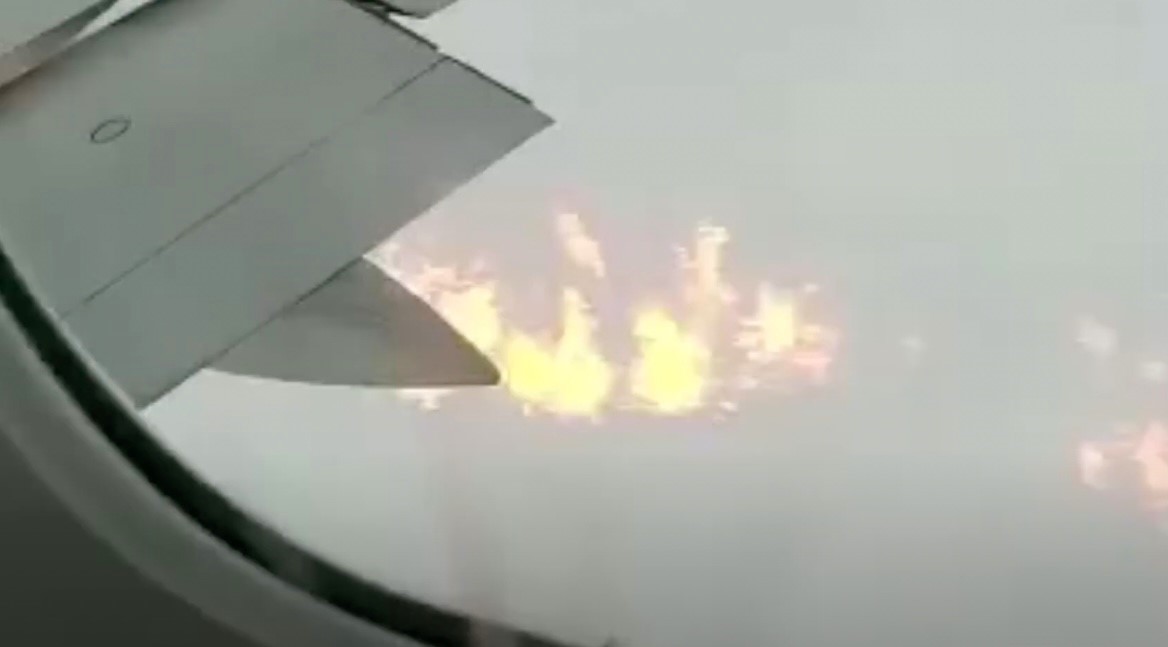


An investigation report has been published on the February 2023 incident, in which flames erupted from the engine of a Delta Airlines Boeing 767 plane, shortly after taking off from Edinburgh Airport.
N197DN is a Boeing 767-332 aircraft that is ETOPS certified and powered by two Pratt & Witney PW4060 turbofan engines. It was delivered to the operator in December 1997 and had completed 15,843 flight cycles and 106,760 flight hours by the time of the serious incident.
The aircraft was fitted with two Pratt & Whitney PW4060 turbofan engines, and the engine installed on the right wing was serial number ESN 724314. The affected engine had accumulated a total of 90,814 hours and 15,560 cycles in operation with 1,862 hours and 331 cycles since its last maintenance shop visit.
The report has been published by the Air Accidents Investigation Branch , the government agency tasked with investigating civil aircraft incidents within the U.K., regarding the Edinburgh to New York Delta Air Lines flight on February 10, 2023.
A video from inside the 767 caught bright orange flames burning under the wing of the aircraft with around 211 passengers and ten members of the crew onboard.
Investigators found the Boeing 767-332(ER) suffered a contained engine failure leading to a consequential fuel leak and spitting flames. The AAIB's report questioned why the vibrations from a broken engine were sufficient to fracture the Boeing 767's "slat track housing drain tube."
During takeoff from Edinburgh Airport, a high-pressure turbine (HPT) blade fractured in the right engine (PW4060), which damaged a further five blades, but the engine was still capable of producing thrust.
The AAIB report read,
"The engine was subsequently stripped at the operator’s engine maintenance facility, and it was found that six blades on the HPT 2 disk exhibited transverse fractures."
"These blades were identified as Blades 2 through 7. Further damage was noted to the turbine section downstream of the HPT 2 disk consistent with turbine blade loss."
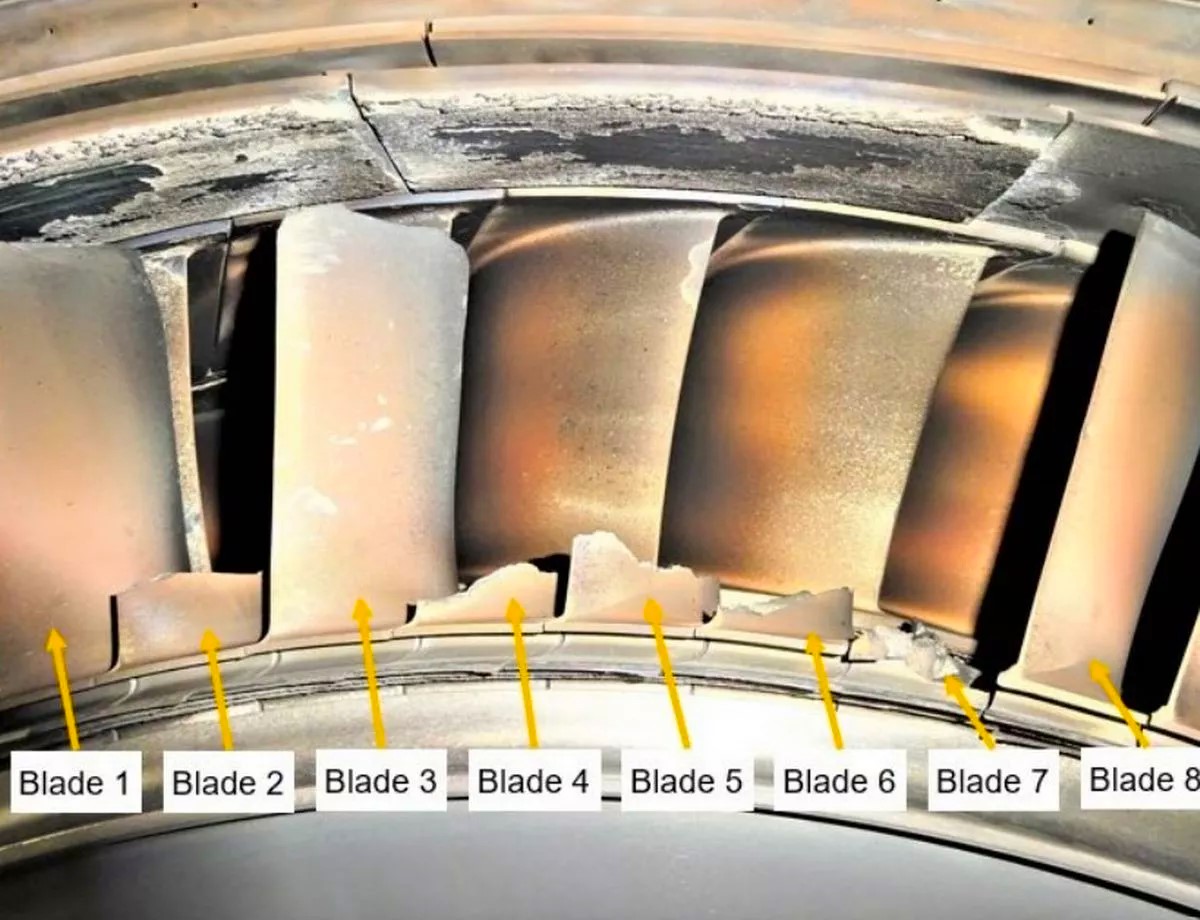
The blade set was examined by the engine manufacturer which revealed that the facture face of Blades 2 to 6 exhibited jagged non-directional fracture features indicative of rapid tensile overstress due to secondary impact. Blade 7 exhibited fracture features consistent with fatigue, indicating that it was the first blade to detach.
The fractured blades of HPT 2 disk caused vibrations which ultimately led to fuel escaping from the right wing fuel tank. The report warned that fuel leakage was within close proximity of the plane's "hot brakes," caused by the overweight landing, which could have ignited the fuel that was leaking from the right wing onto the tarmac.
Due to the high engine vibration, the flight crew diverted the aircraft, which was bound for New York's JFK Airport, to Glasgow-Prestwick Airport for an emergency landing, as suggested by air traffic control.
During the diversion, fuel escaping from the wing was ignited by the hot engine exhaust, causing flames, and this was recorded by a passenger.
It is the opinion of the engine manufacturer (Pratt & Whitney) that the magnitude of imbalance from the damaged HPT 2 disk exceeded the level of imbalance observed in the two prior B767 events. All three events resulted in the fracture of the slat track housing drain tube, and the time to shut down the engine after the blade loss was of a similar order of magnitude.
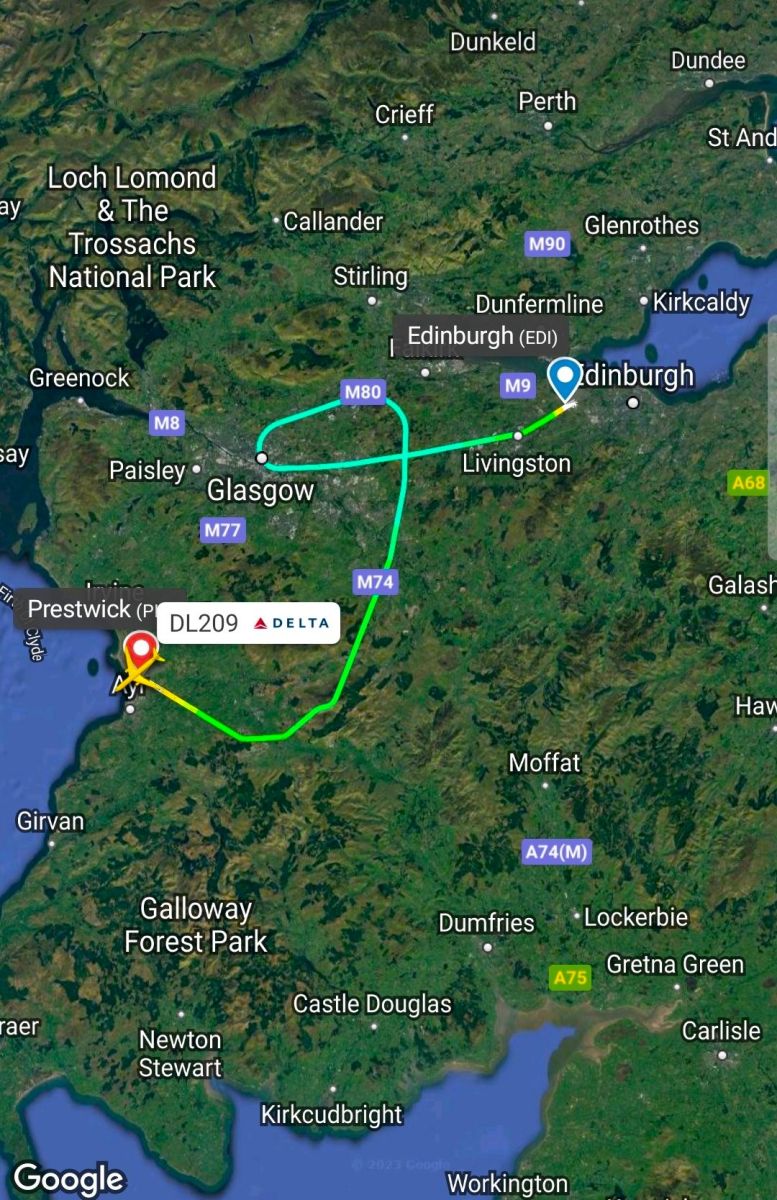
A preliminary external inspection revealed no evidence of soot or heat damage to the engine cowlings, or other external surfaces of the aircraft. An inspection of the engine identified a significant quantity of loose metal items and fragments in the cowlings and the exhaust.
Further examination revealed many broken system mounting brackets, component chaffing damage and the oil scavenge line for bearing No 3 had become detached. All the components liberated from the engine had remained within the casing or cowls and was therefore considered a ‘contained engine failure’.
A total of 211 passengers were on board and left "terrified" due to the incident. It was reported at the time that children and teachers from a secondary school in East Dunbartonshire were among those on the plane - who were on their way to the US for a school trip.
The fire extinguished before landing, and the aircraft made a safe landing at Prestwick Airport, after which passengers were "rapidly disembarked" without their baggage as emergency services attended to the leaking plane. The report mentioned,
"The aircraft landed promptly, with full emergency service attendance. After the aircraft arrived on stand, the airport fire service noticed the fuel coming from the right wing and put provisions in place to capture the fuel, preventing it igniting on the hot engine or brakes. The passengers were rapidly disembarked, with no injuries."
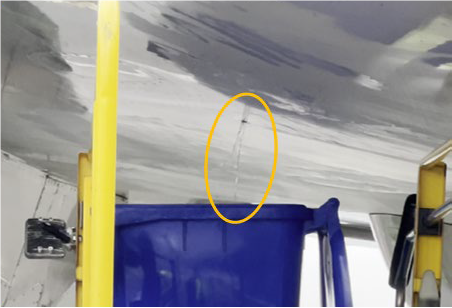
While there were no injuries to the occupants of the aircraft, the AAIB said that there was "the potential for a more significant event to have occurred."
The flight crew managed the overweight landing according to the associated QRH guidance; they used the longest runway nearby, with flaps 25, autoland, maximum autobrake, and requested AFS attendance on arrival.
After the aircraft arrived on a stand, the airport fire service noticed the fuel coming from the right wing and put provisions in place to capture the fuel, preventing it from igniting on the hot engine or brakes.
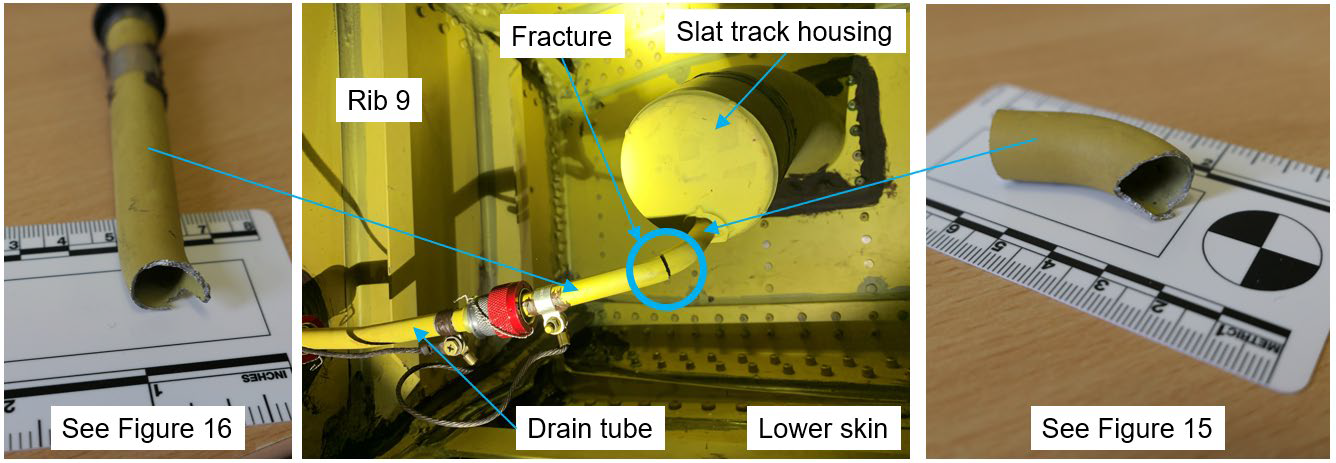
The report further added:
“A Safety Recommendation has been made to the Federal Aviation Administration that requires the Boeing Aircraft Company to demonstrate that following this serious incident, the design of the slat track housing drain tube on the Boeing 767 family of aircraft continues to comply with the certification requirements for large transport aircraft.”
However, the AAIB acknowledged that, following the serious incident, Boeing has launched a review of the design of its drain tube for "potential reliability improvements."
According to the report, Boeing's review found that "there was no increased risk to a catastrophic outcome from a failed drain tube."
Investigative Pictures and Visuals : © Crown copyright 2024
